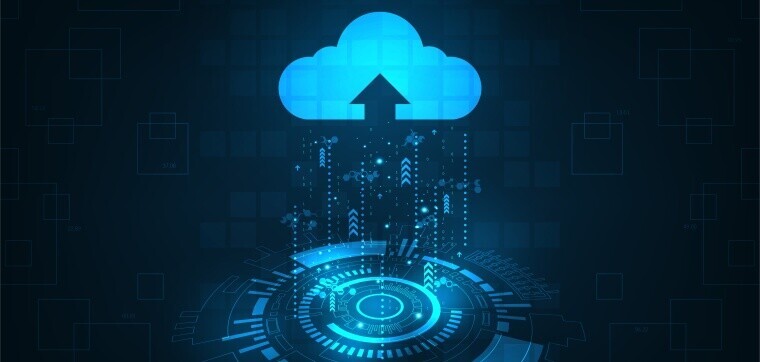Since October 2022 Softline has been operating under the brand name Noventiq.
Business today is powered by applications and the data and information they deliver. Digital transformation holds the promise of new business models, optimized processes, and greater responsiveness to ever-growing customer expectations and regulations, but legacy applications often don’t support this breadth of possibility. Application modernization is the process of updating an organization's existing applications to a cloud-first model. If an organization uses on-premises applications, modernization may involve migrating those to a public, private, or hybrid cloud.
Application modernization steps
The process of modernizing an organization's applications can be broadly defined by three steps:
Planning - This first step requires organizations to think carefully about their goals and define their strategy before any action is taken. This is the time to discover and assess existing applications and environments in preparation for change.
Implementation - During this step, organizations build new skills and begin modernizing their applications iteratively. An iterative modernization approach gives organizations the flexibility to change their project scope or strategy as needed. Alternatively, you can ask expert partners like Softline to help you every step of the way.
Operations - App modernization is not a one-and-done deal. Once organizations move to a cloud-first approach, they can use cloud platform services and tools to help secure, govern, manage, and optimize their apps.
Application modernization strategies and trade-offs
Rehosting - The lift-and-shift aspect of rehosting makes it a fast way to decrease reliance on private datacenters because organizations take apps from their previous environment and transition them as-is to their new, cloud environment. Organizations faced with a hardware refresh find the cloud’s elastic pricing and provider-based management attractive. However, little or no functionality is added to the rehosted application.
Replatforming - This approach lies in between rehosting and refactoring. With replatforming, organizations make code changes so that apps can be used with cloud technologies. Replatforming an application allows it to take advantage of cloud platform capabilities like autoscaling. While immediately useful, organizations might need external experts to avoid unexpected (and unwelcome) surprises that impact application stability and performance.
Refactoring – It prioritizes productivity as well as speed. With this strategy, apps need only minimal code changes, so that they can connect easily to and make the most of a cloud-first environment. Refactoring an application written with aging and rigid architectural patterns like three-tier enables you to capitalize on new approaches, including microservices and serverless. Cautions with refactoring include its time-consuming nature and lack of well-understood best practices.
Rearchitecting - If an organization needs cloud scalability, rearchitecting might be the right approach. With rearchitecting, apps functionality is improved and code is modified and extended to scale better in the cloud.
Full application rewriting - For recreating an app using cloud solutions, rebuilding is sometimes the right option. A full rewrite provides the most flexibility in terms of application functionality. However, like refactoring, it can be costly and complex.
Replacing an application – If an app won't meet current or future business needs even after rebuilding, replacing it with a ready-made solution may be necessary. This approach can be faster than rebuilding and free up valuable development resources. But replacing apps could pose challenges including interruptions to business processes and end-user adoption of the new solution.
Benefits of modernizing applications with Azure
Accelerated innovation and time to market - Where traditional on-premises infrastructure can take weeks or even months to deploy, solutions built with Azure services offer near-instant provisioning of resources. In addition, these solutions can help reducing innovation costs and time to market by using fully managed application and data services.
Deliver innovative experiences –The advantage of modernizing apps is that they'll be able to work with the most current technology, moreover, they'll keep working even as the technology evolves. This seamlessness allows for quick updates and changes to meet current and future business needs.
Enhance security and reliability - With a cloud-first approach, organizations can use built-in updates and security capabilities to help safeguard their workloads. Other built-in features can include task automation for important things like high availability, disaster recovery, backups, and performance monitoring.
Modernize on your terms - With Azure Arc-enabled services, you can extend or migrate your existing apps to maximize current investments and realize the benefits of cloud, including automation and an always-ready environment.
Before starting to modernize applications, organizations should consider the following 4 key recommendations by IDC.
- Perform an inventory and audit of all existing applications to determine which level of modernization is appropriate for each.
- Elevate the strategic importance of modernization to the organization as a whole to ensure the appropriate resources, schedule, and executive sponsorship are in place.
- Acknowledge that modernization is not just about new technology, it’s also a shift in culture that may require new skills and training.
- Finally, choose a cloud provider that supports a wide range of application frameworks and data management technologies, with flexibility for deploying those services in hybrid and multicloud environments.
Softline, as a Gold Microsoft Partner guides you through all the steps of your application modernization journey, enabling you to take advantage of all the benefits Microsoft Azure offers.
If you would like to read more about cloud application modernization, the ebook called Drive Innovation and Business Value Through Cloud Modernization can be downloaded after registration here: https://azure.microsoft.com/en-us/resources/drive-innovation-and-business-value-through-cloud-modernization/









